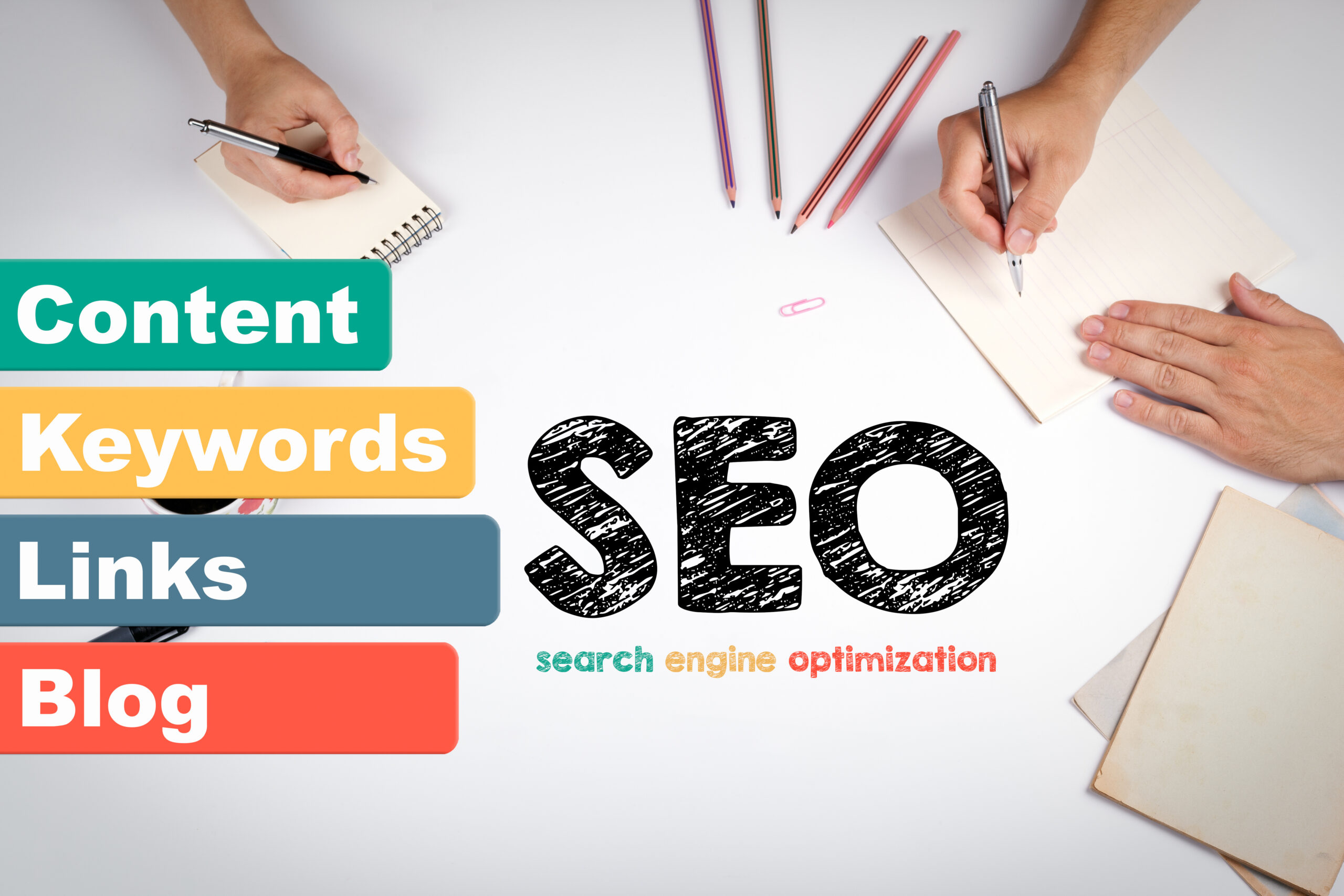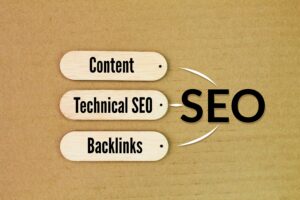
The Role of SEO in Boosting Online Visibility
What is SEO and Why Does It Matter?
Search Engine Optimization (SEO) is the practice of enhancing a website’s visibility on search engine results pages (SERPs) through strategic techniques and optimizations. At its core, SEO aims to make a website more accessible, relevant, and authoritative in the eyes of search engines like Google, Bing, and Yahoo. By aligning a website’s content and structure with search engine algorithms, businesses can attract more organic (unpaid) traffic.
In today’s digital-first world, SEO is no longer optional—it’s essential. With billions of searches conducted daily, search engines have become the go-to resource for finding information, products, and services. If your website isn’t optimized for search, it risks being buried under competitors who are. SEO not only drives traffic but also ensures that the right audience finds your content, leading to higher engagement and conversions.
The impact of SEO on online visibility is profound. Websites that rank on the first page of search results receive the lion’s share of clicks, with the top three results capturing over 50% of all traffic. Without SEO, even the most beautifully designed website can remain invisible to potential customers. In essence, SEO bridges the gap between your business and your audience, making it a cornerstone of any successful digital strategy.
Table of Contents
Key Components of SEO That Drive Visibility
On-Page SEO
 On-page SEO focuses on optimizing individual web pages to rank higher and earn more relevant traffic. This includes crafting high-quality, keyword-rich content that aligns with user intent. Meta tags, such as title tags and meta descriptions, play a crucial role in signaling to search engines what your page is about. For example, a well-optimized title tag not only improves rankings but also entices users to click.
On-page SEO focuses on optimizing individual web pages to rank higher and earn more relevant traffic. This includes crafting high-quality, keyword-rich content that aligns with user intent. Meta tags, such as title tags and meta descriptions, play a crucial role in signaling to search engines what your page is about. For example, a well-optimized title tag not only improves rankings but also entices users to click.
Other on-page elements include header tags (H1, H2, etc.), internal linking, and image optimization. By structuring content logically and incorporating relevant keywords naturally, you enhance both user experience and search engine understanding. On-page SEO is the foundation of online visibility—it ensures your content is discoverable and engaging.
Off-Page SEO
Off-page SEO involves activities outside your website that influence its authority and reputation. Backlinks, or links from other websites to yours, are a critical factor. High-quality backlinks from reputable sites signal to search engines that your content is valuable and trustworthy. Social signals, such as shares and likes, also contribute to your site’s credibility.
Brand mentions, even without direct links, can boost your online visibility. For instance, if a popular blog references your business, it increases your visibility and authority. Off-page SEO is about building relationships and trust within your industry, which ultimately drives traffic and rankings.
Technical SEO
Technical SEO ensures that search engines can crawl and index your site effectively. Key factors include site speed, mobile-friendliness, and secure connections (HTTPS). A slow-loading website or one that isn’t optimized for mobile devices can deter both users and search engines.
Crawlability is another critical aspect. If search engines can’t access your site’s content due to poor structure or broken links, your rankings will suffer. Tools like XML sitemaps and robots.txt files help guide search engines through your site. Technical SEO is the backbone of a well-optimized website—it ensures that all other efforts are not in vain.
Local SEO
For businesses with a physical presence, local SEO is indispensable. It focuses on optimizing your online presence to attract customers in your geographic area. This includes claiming your Google Business Profile, optimizing for local keywords, and encouraging customer reviews.
For example, a bakery in New York City would benefit from appearing in “near me” searches like “best bakery near me.” Local SEO not only drives foot traffic but also builds community trust. It’s a powerful tool for small and medium-sized businesses looking to compete in their local markets.
How Search Engines Rank Websites

Search engines use complex algorithms to determine the order in which websites appear in search results. These algorithms evaluate hundreds of factors, but three key elements stand out: relevance, authority, and user experience.
Relevance measures how well your content matches a user’s query. This is where keyword optimization and content quality come into play. Authority is determined by factors like backlinks and domain reputation—essentially, how trustworthy your site appears. User experience encompasses site speed, mobile usability, and engagement metrics like bounce rate.
Staying updated with algorithm changes is crucial. For instance, Google’s Core Web Vitals update emphasized the importance of page speed and interactivity. Businesses that adapt to these changes maintain their rankings, while those that don’t risk losing online visibility.
The Relationship Between SEO and Content Marketing
 SEO and content marketing are two sides of the same coin. High-quality content is the fuel that powers SEO efforts. Without valuable, engaging content, even the best SEO strategies will fall flat. Keyword research is the starting point—it helps identify topics that resonate with your audience and align with search intent.
SEO and content marketing are two sides of the same coin. High-quality content is the fuel that powers SEO efforts. Without valuable, engaging content, even the best SEO strategies will fall flat. Keyword research is the starting point—it helps identify topics that resonate with your audience and align with search intent.
Blogs, videos, and infographics are particularly effective in driving organic traffic. For example, a well-researched blog post targeting a long-tail keyword can rank for months or even years, continuously bringing in visitors. Content marketing also supports link-building efforts, as other websites are more likely to link to valuable resources.
In essence, SEO ensures your content is discoverable, while content marketing ensures it’s worth discovering. Together, they amplify your online visibility.
The Impact of SEO on Brand Awareness
Appearing on the first page of search results does more than drive traffic—it builds credibility. Users often associate high rankings with authority and trustworthiness. For example, a business that consistently appears in top results for industry-related queries becomes a go-to resource in its niche.
SEO also creates a consistent online presence. By optimizing for branded keywords and maintaining active social profiles, businesses can reinforce their identity across multiple platforms. This consistency helps establish a strong, recognizable brand.
Moreover, SEO allows businesses to reach their target audience effectively. By focusing on specific keywords and demographics, you can attract users who are genuinely interested in your offerings, leading to higher engagement and conversions. This targeted approach is key to maximizing online visibility.
Common SEO Mistakes That Hurt Visibility

Even the best intentions can lead to SEO pitfalls. Keyword stuffing—overloading content with keywords—can result in penalties from search engines. Similarly, over-optimization, such as using exact-match anchor text excessively, can harm your rankings.
Neglecting mobile optimization is another common mistake. With mobile devices accounting for over half of global web traffic, a site that isn’t mobile-friendly risks losing a significant portion of its audience. Slow site speed is equally detrimental, as users are unlikely to wait for a page that takes too long to load.
Ignoring analytics and performance tracking is perhaps the most significant oversight. Without data, it’s impossible to measure the effectiveness of your SEO efforts or identify areas for improvement. Regularly monitoring your online visibility metrics is essential for long-term success.
Tools and Strategies to Improve SEO Performance
A variety of tools can help you optimize your SEO efforts. Google Analytics and Google Search Console provide invaluable insights into traffic, user behavior, and site performance. Tools like SEMrush and Ahrefs offer advanced features for keyword research, backlink analysis, and competitor tracking.
Regular audits are essential for maintaining SEO health. These audits identify issues like broken links, duplicate content, and technical errors. Optimizing for featured snippets and voice search are actionable strategies that can give you a competitive edge. For example, structuring content to answer common questions increases your chances of appearing in voice search results.
Leveraging these tools and strategies effectively can significantly enhance your online visibility.
The Future of SEO and Online Visibility
SEO is constantly evolving, and staying ahead of trends is crucial. Artificial intelligence (AI) and machine learning are playing an increasingly significant role in search algorithms. For instance, Google’s RankBrain uses AI to better understand search intent, making it essential to create content that aligns with user needs.
User experience will continue to be a priority, with Core Web Vitals becoming even more critical. As voice search and visual search gain popularity, optimizing for these formats will be key. Over the next 5-10 years, SEO will likely become even more integrated with other digital marketing disciplines, emphasizing a holistic approach to online visibility.
Case Studies: Businesses That Boosted Visibility with SEO
One notable example is a small e-commerce store that used SEO to compete with larger retailers. By focusing on long-tail keywords and creating detailed product descriptions, they increased organic traffic by 300% in six months. Another case involves a local restaurant that optimized its Google Business Profile and encouraged customer reviews, resulting in a 50% increase in foot traffic.
These examples highlight the power of targeted SEO strategies. The key takeaway is that success requires a combination of technical expertise, high-quality content, and a deep understanding of your audience. By implementing these strategies, businesses can achieve remarkable improvements in their online visibility.
Frequently Asked Questions
How to do SEO in marketing?
SEO in marketing is the process of optimizing your website and online content to improve search engine rankings and increase online visibility. It involves keyword research, high-quality content creation, technical optimizations, and link-building strategies. By enhancing website structure, improving page speed, and ensuring mobile-friendliness, businesses can attract more organic traffic. SEO also includes local SEO tactics, such as optimizing Google Business profiles and acquiring local citations, to help businesses rank in location-based searches. Effective SEO in marketing ensures that your brand appears in front of the right audience, driving higher engagement and conversions.
How do I do SEO on my own?
Doing SEO on your own is possible with the right approach and tools. Start by researching keywords that your target audience searches for and strategically place them in your website content, titles, and meta descriptions. Optimize your website by improving loading speed, using mobile-friendly designs, and ensuring proper site structure with internal links. Creating high-quality, valuable content regularly, such as blog posts, helps improve online visibility. Additionally, build backlinks by getting mentions from reputable websites. Use free tools like Google Search Console and Google Analytics to track your progress and refine your SEO strategy over time.
What are the four types of SEO?
SEO is divided into four main types, each playing a crucial role in improving online visibility:
- On-Page SEO – Optimizing individual web pages by incorporating relevant keywords, crafting high-quality content, and improving meta tags, headings, and images.
- Off-Page SEO – Enhancing website authority through link-building, social media marketing, and influencer collaborations to generate backlinks from reputable sources.
- Technical SEO – Ensuring your website meets search engine requirements by optimizing page speed, mobile responsiveness, structured data, and security (HTTPS).
- Local SEO – Targeting local audiences by optimizing Google Business Profiles, collecting online reviews, and using location-specific keywords to appear in local search results.
A strong SEO strategy incorporates all four types to maximize search rankings and online presence.
Is SEO good for beginners?
Yes! SEO is beginner-friendly, especially with the wealth of free resources available to learn best practices. While SEO may seem complex at first, focusing on fundamental strategies—such as keyword optimization, content creation, and technical improvements—can yield significant results. Many tools, including Google Keyword Planner, Ubersuggest, and Yoast SEO, make it easier for beginners to analyze website performance and refine their strategies. SEO is a long-term investment, but with consistency, even beginners can improve their website’s online visibility and drive more traffic without hiring an expert.

